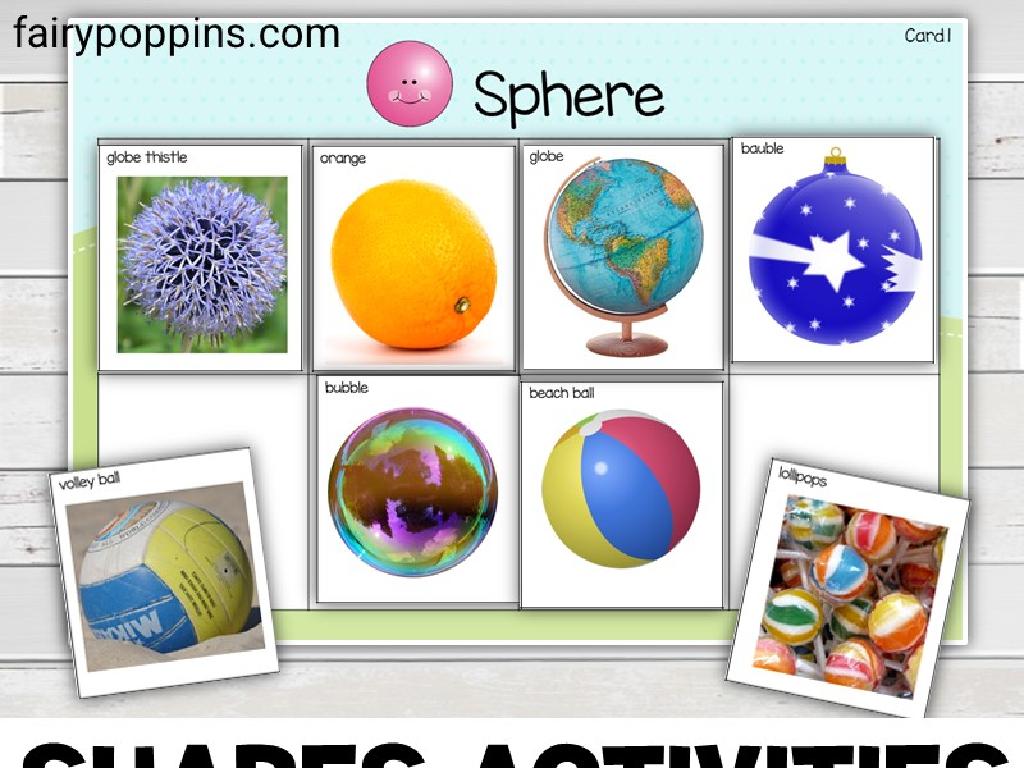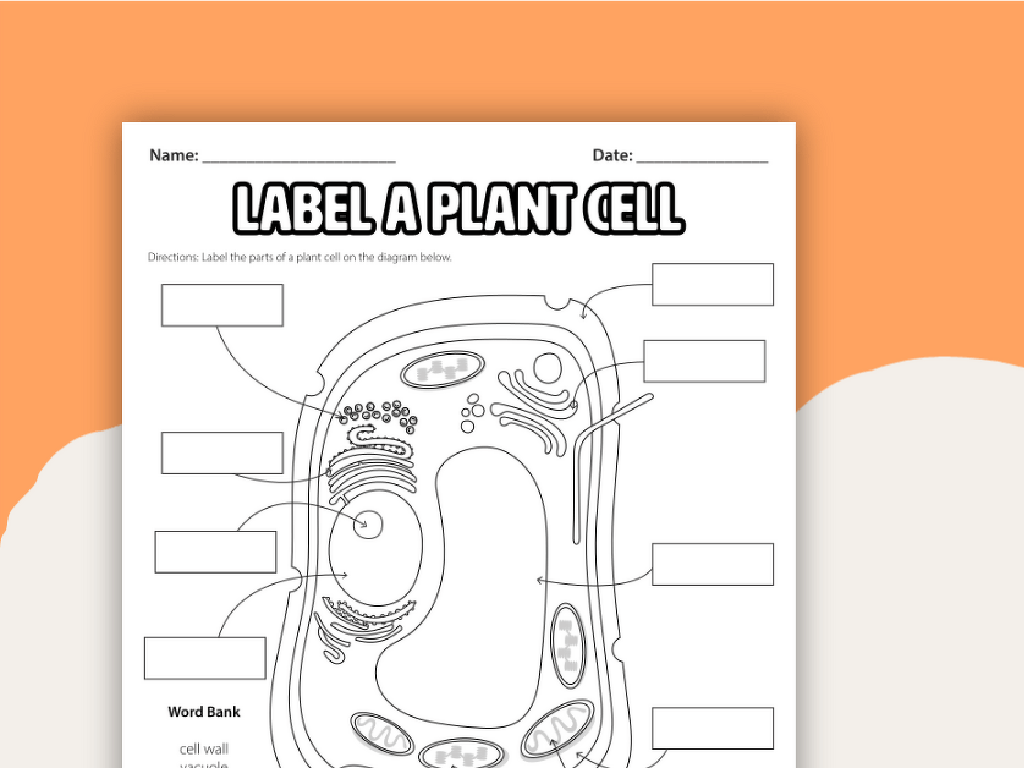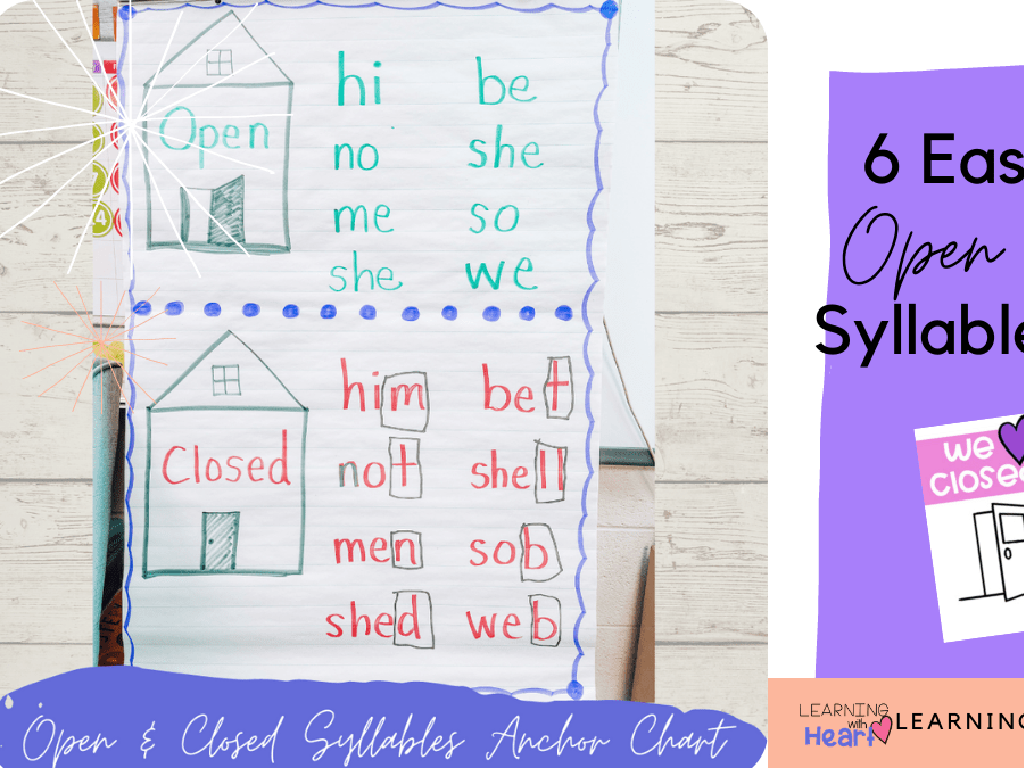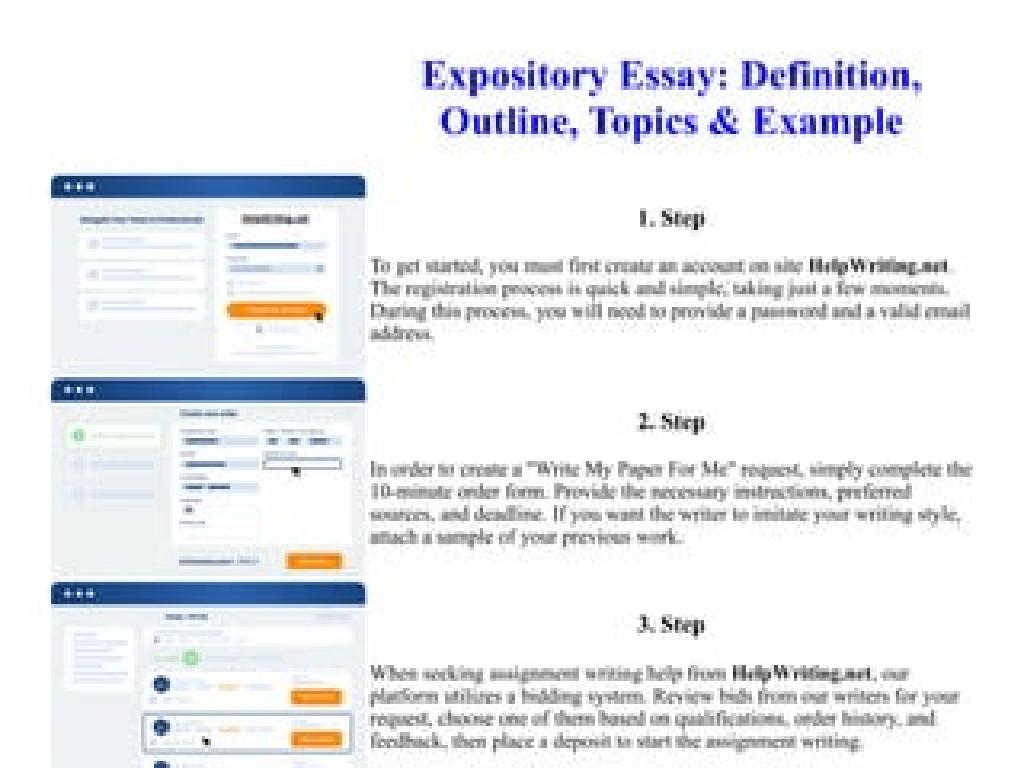Pennies, Nickels, Dimes, And Quarters
Subject: Math
Grade: Pre-k
Topic: Money
Summary: Introduce Pre-K learners to the basics of U.S. coins in this engaging math lesson focused on pennies, nickels, dimes, and quarters. Through songs, matching games, and hands-on sorting activities, students will learn each coin's appearance, value, and real-life use. With fun counting exercises and interactive visuals, kids build foundational money skills while recognizing key historical figures on each coin. This lesson makes learning coin values both educational and playful.
Please LOG IN to download the presentation. Access is available to registered users only.
View More Content
Welcome to Money Basics!
– Greetings and introduction to money
– Focus on learning about coins
– Discussing the use of money
– Money is used to buy things like toys and food.
– Engaging question for the class
– Can you think of something you bought with money?
|
This slide is designed to introduce young learners to the concept of money, with a focus on coins. Start the class with a warm greeting and explain that today’s lesson will be about money, which comes in different forms like coins and bills. Emphasize that we will be learning about coins today. Explain that money is used to purchase goods and services, such as toys, food, and clothes. Engage the students by asking if they can share what money is used for or if they remember buying something with money. This will help them connect the concept of money to their own experiences. Encourage participation and be prepared to provide examples if the students are shy or unsure.
Meet the Coins
– Four main types of coins
– Penny: 1 cent
– A penny is copper and worth 1 cent.
– Nickel: 5 cents
– A nickel is larger than a penny and worth 5 cents.
– Dime: 10 cents
– A dime is the smallest coin and worth 10 cents.
– Quarter: 25 cents
– A quarter is the biggest and worth 25 cents.
|
This slide introduces the basic coins used in US currency to Pre-K students. Start by explaining that money comes in different forms, including coins. Show real coins or images of a penny, nickel, dime, and quarter. Describe each coin’s color, size, and the figure on it to help students recognize them. Explain the value of each coin in simple terms, such as how many pennies make a nickel, a dime, and a quarter. Use tangible examples like buying a small toy or a piece of candy to illustrate how coins are used in real life. Encourage the children to touch and hold the coins if possible, to familiarize themselves with the physical characteristics of each type.
Learning About Pennies
– A penny equals 1 cent
– It’s the smallest coin
– Smaller than nickels, dimes, and quarters
– Pennies are copper-colored
– They’re shiny and brown
– Abraham Lincoln is on the penny
– He was the 16th President of the USA
|
This slide introduces the penny to Pre-K students, helping them recognize and understand the value of the coin. Emphasize that a penny is the smallest amount of money in US currency, which can be a starting point for understanding bigger coins. Show real pennies or images to help them identify the color and the person on the coin. Explain that Abraham Lincoln is an important historical figure, which can be a bridge to more learning. Engage the students by asking if they have seen a penny before and what they know about it. This will make the learning experience interactive and memorable.
Learning About the Nickel
– A nickel is worth 5 cents
– Nickels are larger than pennies
– Compare size with a penny to see the difference
– Thomas Jefferson is on the nickel
– Recognize Jefferson’s face on the coin
– Nickels have a silver color
– Notice the shiny silver color distinct from pennies
|
This slide introduces the nickel to Pre-K students, emphasizing its value, size, and appearance. Start by explaining that a nickel is a coin used in the United States worth 5 cents, which is the same as five pennies. Show them the actual size difference between a nickel and a penny. Point out the face of Thomas Jefferson on the nickel and explain who he was. Lastly, help them identify the color of the nickel as silver, which is different from the copper-colored penny. Use real coins for a hands-on experience, and consider a matching game where kids match coins to their names and values.
Learning About Dimes
– A dime is worth 10 cents
– Smallest coin, but valuable
– Though tiny, it’s worth more than the bigger penny and nickel!
– Dimes feature Roosevelt
– Franklin D. Roosevelt, the 32nd president, is on the dime.
– Practice counting by tens
– Use dimes to count easily in tens, like 10, 20, 30…
|
This slide introduces the dime to Pre-K students, emphasizing its value, size, and the historical figure featured on it. Start by explaining that a dime is worth 10 cents, which is more than a penny (1 cent) and a nickel (5 cents), despite being the smallest in size. Show them a dime and let them feel its size compared to other coins. Highlight that Franklin D. Roosevelt, an important historical figure, is on the dime to give them a sense of history. Finally, engage the students in a counting exercise by tens using dimes to help them understand the concept of counting and accumulation of value in coins. This will set a foundation for basic arithmetic and money management skills.
Learning About Quarters
– A quarter equals 25 cents
– That’s like 25 pennies!
– It’s the biggest of the coins
– Easy to spot because it’s the largest
– Quarters show George Washington
– He was the first U.S. president
– Quarters are important for money
|
This slide introduces the quarter, a fundamental coin in U.S. currency. Emphasize that a quarter is worth 25 cents, which is the same as 25 pennies, to help the children understand its value. Show them the size difference between a quarter and other coins to illustrate that it’s the largest. Point out George Washington’s face on the quarter and explain his significance as the first president of the United States. Use real coins to help children identify and become familiar with quarters. You can also engage the class in a hands-on activity where they can touch and compare quarters to other coins.
Let’s Count Together: Coin Counting
– Practice counting with pennies
– Each penny is 1, so 10 pennies make 10
– Count by fives with nickels
– Nickels are worth 5, so 2 nickels make 10
– Dimes help us count by tens
– 10 cents for a dime, so 10 dimes make 100
– Quarters count by twenty-fives
– Quarters are 25 cents, 4 quarters make 100
|
This slide is designed to help Pre-K students practice counting using different coins. Start with pennies, as they are worth 1 cent each, making them the simplest for young learners to understand. Move on to nickels, which are worth 5 cents, and show how counting by fives can be done using them. Introduce dimes next, explaining that each is worth 10 cents, and demonstrate counting by tens. Lastly, explain that quarters are worth 25 cents each and can be used to count by twenty-fives. Use real coins or coin manipulatives to give students hands-on practice, and encourage them to count out loud together. This activity will not only help with counting skills but also with recognizing the value of different coins.
Coin Matching Game
– Match coins to their shadows
– Recognize each coin by its size and color
– Pennies are small and copper, nickels are larger and silver
– Learn the names: penny, nickel, dime, quarter
– Dimes are very small and silver, quarters are big and silver
– Have fun while learning about money!
|
This interactive game is designed to help Pre-K students become familiar with the physical characteristics of pennies, nickels, dimes, and quarters. Set up stations with real coins and their corresponding shadows (outlines). Encourage the children to place each coin on its matching shadow, reinforcing their understanding of each coin’s appearance. As they play, prompt them to say the coin names out loud to enhance memorization. This activity combines visual recognition with tactile learning, which is very effective for young learners. Make sure to supervise the activity closely to ensure safety since coins can be a choking hazard.
Coin Value Song: Learning Coin Values!
– Learn a fun song about coins
– Sing to remember coin values
– Pennies, nickels, dimes, and quarters
– A penny is 1 cent, a nickel is 5, a dime is 10, and a quarter’s 25!
– Practice makes perfect
– We’ll sing the song together many times!
|
This slide introduces a catchy song that will help Pre-K students remember the value of pennies, nickels, dimes, and quarters. The song is a tool for making learning about coins fun and memorable. Encourage the students to sing along and use hand motions to represent each coin and its value. Repetition is key, so plan to sing the song several times throughout the lesson. You can also incorporate physical coins to give a tangible aspect to the learning. After the song, engage the students by asking them to identify the coins and their values to reinforce their learning.
Class Activity: Coin Sorting Fun!
– It’s your turn to sort coins
– Group coins by pennies, nickels, dimes, quarters
– Use color, size, and faces to sort
– Pennies are brown, nickels are larger and silver, dimes are small and silver, quarters are large and silver
– Have fun while learning!
|
This activity is designed to help Pre-K students recognize and sort different US coins. Provide a variety of coins and have the children sort them into labeled containers. Explain that pennies are brown and have Abraham Lincoln on them, nickels are larger and have Thomas Jefferson, dimes are the smallest and have Franklin D. Roosevelt, and quarters are the largest and have George Washington. Encourage the children to touch and look at the coins closely to see the differences. Possible activities include matching coins to pictures, sorting coins by size, and playing a game where they earn pretend items with the coins they sort correctly. This hands-on experience will reinforce their understanding of money and its physical characteristics.
Review and Goodbye!
– Recap: Coins and their values
– Question: Value of a dime?
– A dime is worth 10 cents
– Praise for today’s learning
– Looking forward to next time
|
This slide is meant to conclude the lesson on money, specifically focusing on the coins: pennies, nickels, dimes, and quarters. Start by reviewing the key points of the lesson, asking the children to recall the value of each coin. Engage the students by asking them about the value of a dime to reinforce their learning. Offer praise to acknowledge their hard work and participation throughout the lesson. Finally, express enthusiasm about seeing them in the next class, leaving them with a positive outlook on learning. This will help in reinforcing the concepts and ensuring the children leave with a sense of accomplishment.





